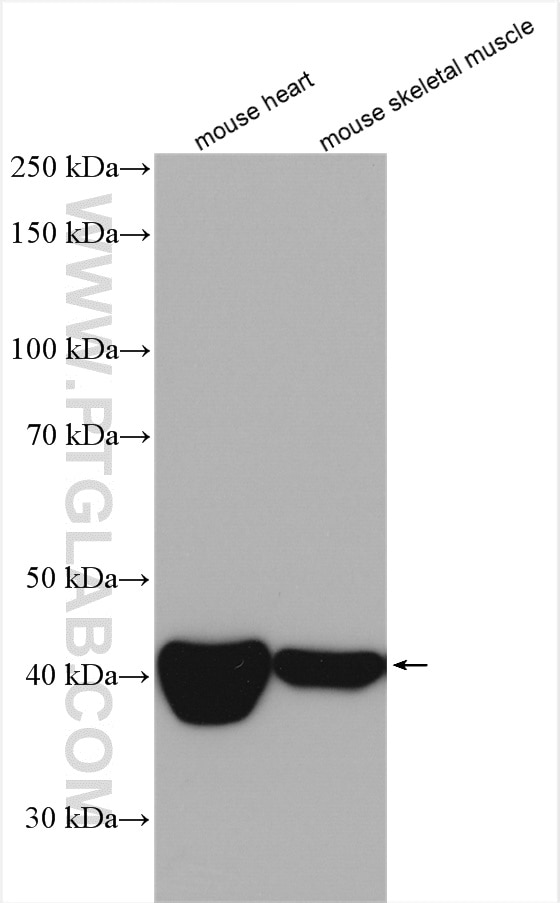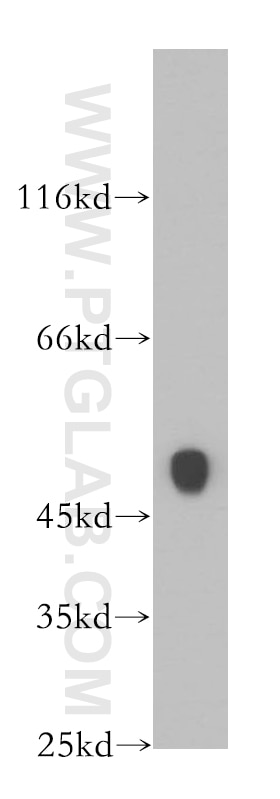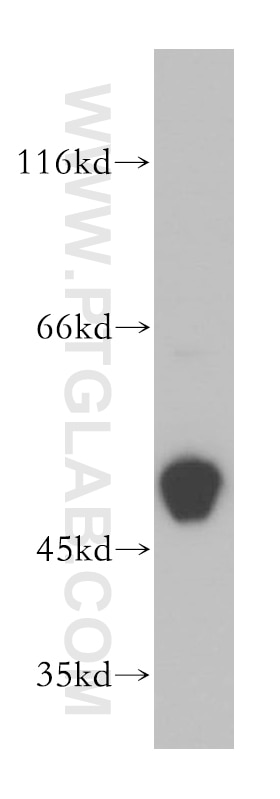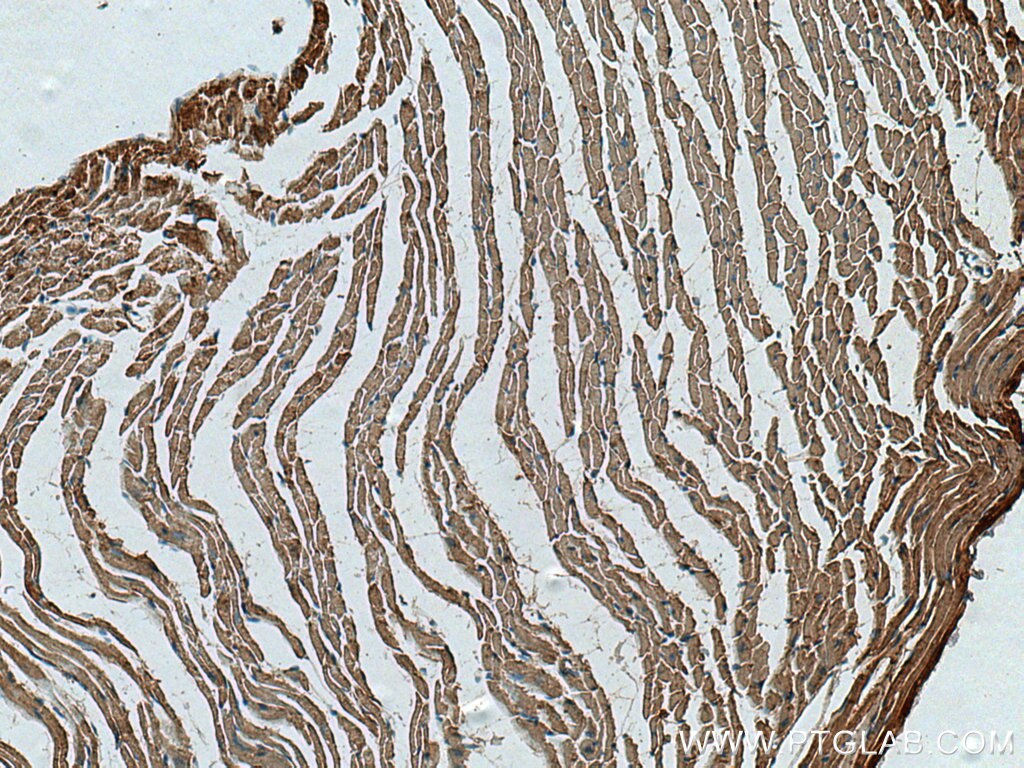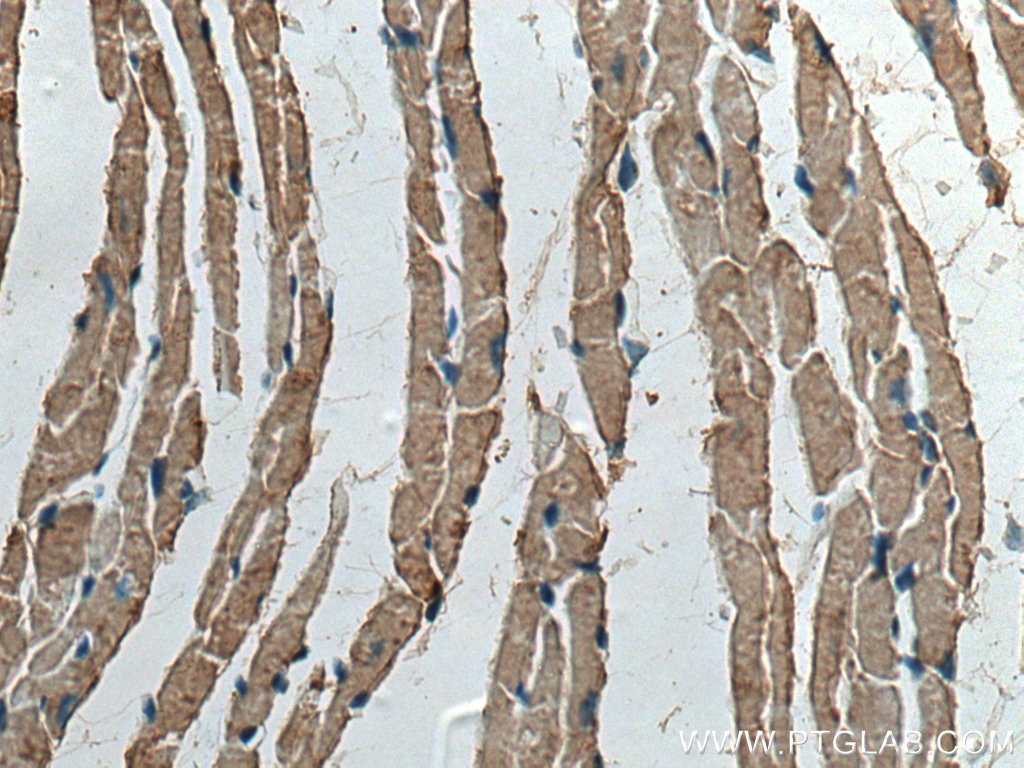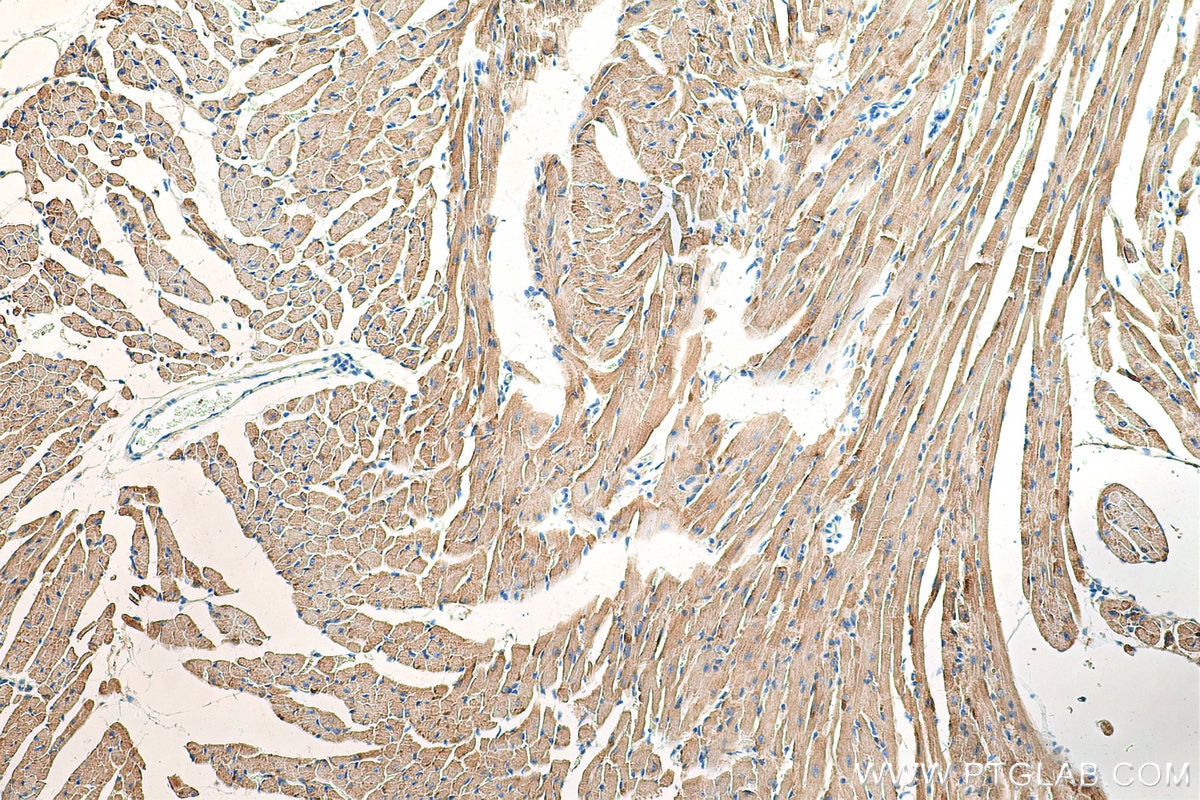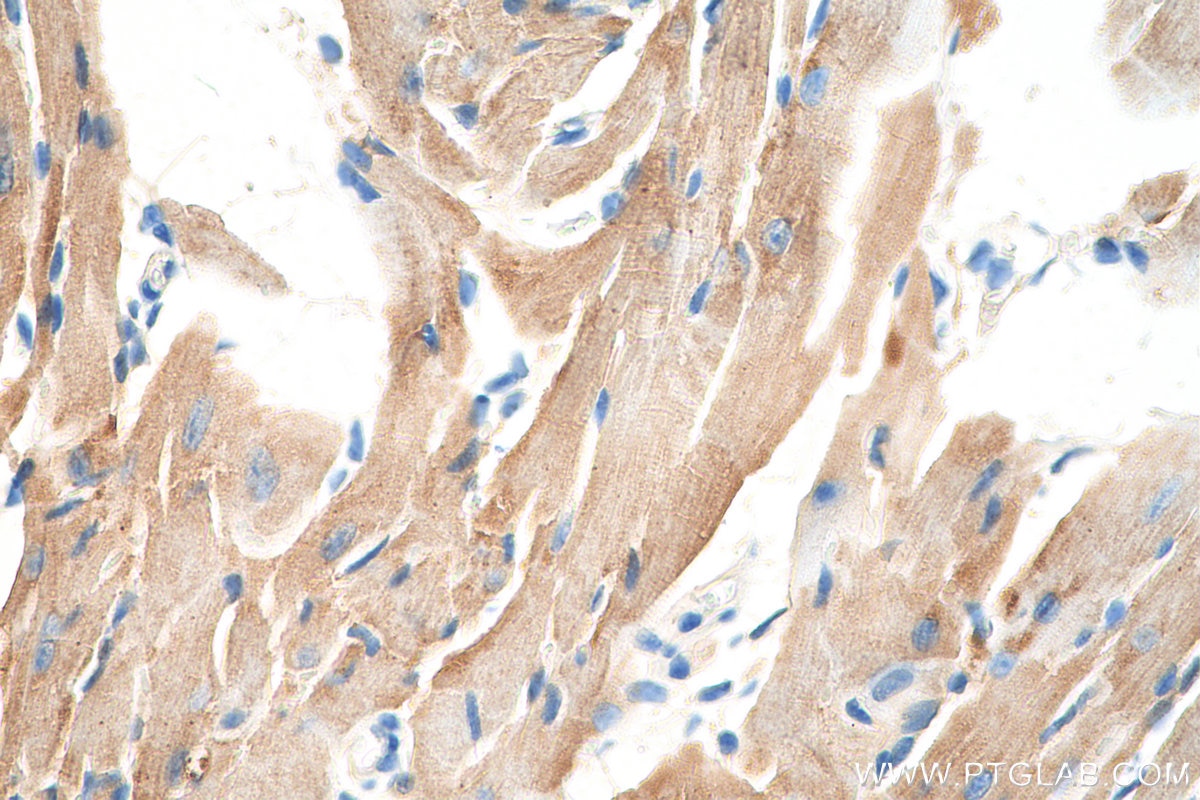- Phare
- Validé par KD/KO
Anticorps Polyclonal de lapin anti-CKMT2
CKMT2 Polyclonal Antibody for WB, IHC, ELISA
Hôte / Isotype
Lapin / IgG
Réactivité testée
Humain, rat, souris et plus (1)
Applications
WB, IHC, IF, CoIP, ELISA
Conjugaison
Non conjugué
N° de cat : 13207-1-AP
Synonymes
Galerie de données de validation
Applications testées
| Résultats positifs en WB | tissu cardiaque de souris, tissu cardiaque humain, tissu de muscle squelettique de souris, tissu de muscle squelettique humain |
| Résultats positifs en IHC | tissu cardiaque de souris, il est suggéré de démasquer l'antigène avec un tampon de TE buffer pH 9.0; (*) À défaut, 'le démasquage de l'antigène peut être 'effectué avec un tampon citrate pH 6,0. |
Dilution recommandée
| Application | Dilution |
|---|---|
| Western Blot (WB) | WB : 1:2000-1:8000 |
| Immunohistochimie (IHC) | IHC : 1:500-1:2000 |
| It is recommended that this reagent should be titrated in each testing system to obtain optimal results. | |
| Sample-dependent, check data in validation data gallery | |
Applications publiées
| KD/KO | See 1 publications below |
| WB | See 8 publications below |
| IHC | See 2 publications below |
| IF | See 1 publications below |
| CoIP | See 1 publications below |
Informations sur le produit
13207-1-AP cible CKMT2 dans les applications de WB, IHC, IF, CoIP, ELISA et montre une réactivité avec des échantillons Humain, rat, souris
| Réactivité | Humain, rat, souris |
| Réactivité citée | Humain, poulet, souris |
| Hôte / Isotype | Lapin / IgG |
| Clonalité | Polyclonal |
| Type | Anticorps |
| Immunogène | CKMT2 Protéine recombinante Ag3971 |
| Nom complet | creatine kinase, mitochondrial 2 (sarcomeric) |
| Masse moléculaire calculée | 419 aa, 48 kDa |
| Poids moléculaire observé | 41-48 kDa |
| Numéro d’acquisition GenBank | BC029140 |
| Symbole du gène | CKMT2 |
| Identification du gène (NCBI) | 1160 |
| Conjugaison | Non conjugué |
| Forme | Liquide |
| Méthode de purification | Purification par affinité contre l'antigène |
| Tampon de stockage | PBS with 0.02% sodium azide and 50% glycerol |
| Conditions de stockage | Stocker à -20°C. Stable pendant un an après l'expédition. L'aliquotage n'est pas nécessaire pour le stockage à -20oC Les 20ul contiennent 0,1% de BSA. |
Informations générales
CKMT2 (Creatine kinase S-type, mitochondrial), also known as s-MtCK, is one of the creatine kinase (CK) isozymes that are tightly coupled to adenosine triphosphate (ATP) output via adenine nucleotide transport proteins or carriers, making it an important player in ATP synthesis and respiratory chain activity (PMID: 38172162). Enhancing Ckmt2 expression or activity can protect against myocardial injury caused by ischemia-reperfusion injury (PMID: 39457679).
Protocole
| Product Specific Protocols | |
|---|---|
| WB protocol for CKMT2 antibody 13207-1-AP | Download protocol |
| IHC protocol for CKMT2 antibody 13207-1-AP | Download protocol |
| Standard Protocols | |
|---|---|
| Click here to view our Standard Protocols |
Publications
| Species | Application | Title |
|---|---|---|
Cell Metab The phytochemical hyperforin triggers thermogenesis in adipose tissue via a Dlat-AMPK signaling axis to curb obesity. | ||
Mol Cell Proteomics Seminal Plasma Proteome as an Indicator of Sperm Dysfunction and Low Sperm Motility in Chickens | ||
Metabolism Sustained mitochondrial biogenesis is essential to maintain caloric restriction-induced beige adipocytes. | ||
Front Cell Dev Biol Hypoxia-immune-related microenvironment prognostic signature for osteosarcoma | ||
Mol Cell Proteomics Seminal Plasma Proteome as an Indicator of Sperm Dysfunction and Low Sperm Motility in Chickens. | ||
J Agric Food Chem Artepillin C, a key component of Brazilian propolis, induces thermogenesis in inguinal white adipose tissue of mice through a creatine metabolism-related thermogenic pathway. |
Avis
The reviews below have been submitted by verified Proteintech customers who received an incentive for providing their feedback.
FH Neeraj (Verified Customer) (08-19-2025) | This antibody performed very well in validating my Western blot analysis following transfection in cell lines. It demonstrated high specificity, especially when compared to a similar antibody from another supplier, which showed non-specific binding. I also used it for immunofluorescence experiments, and the results were satisfactory, with clear and consistent staining
|
